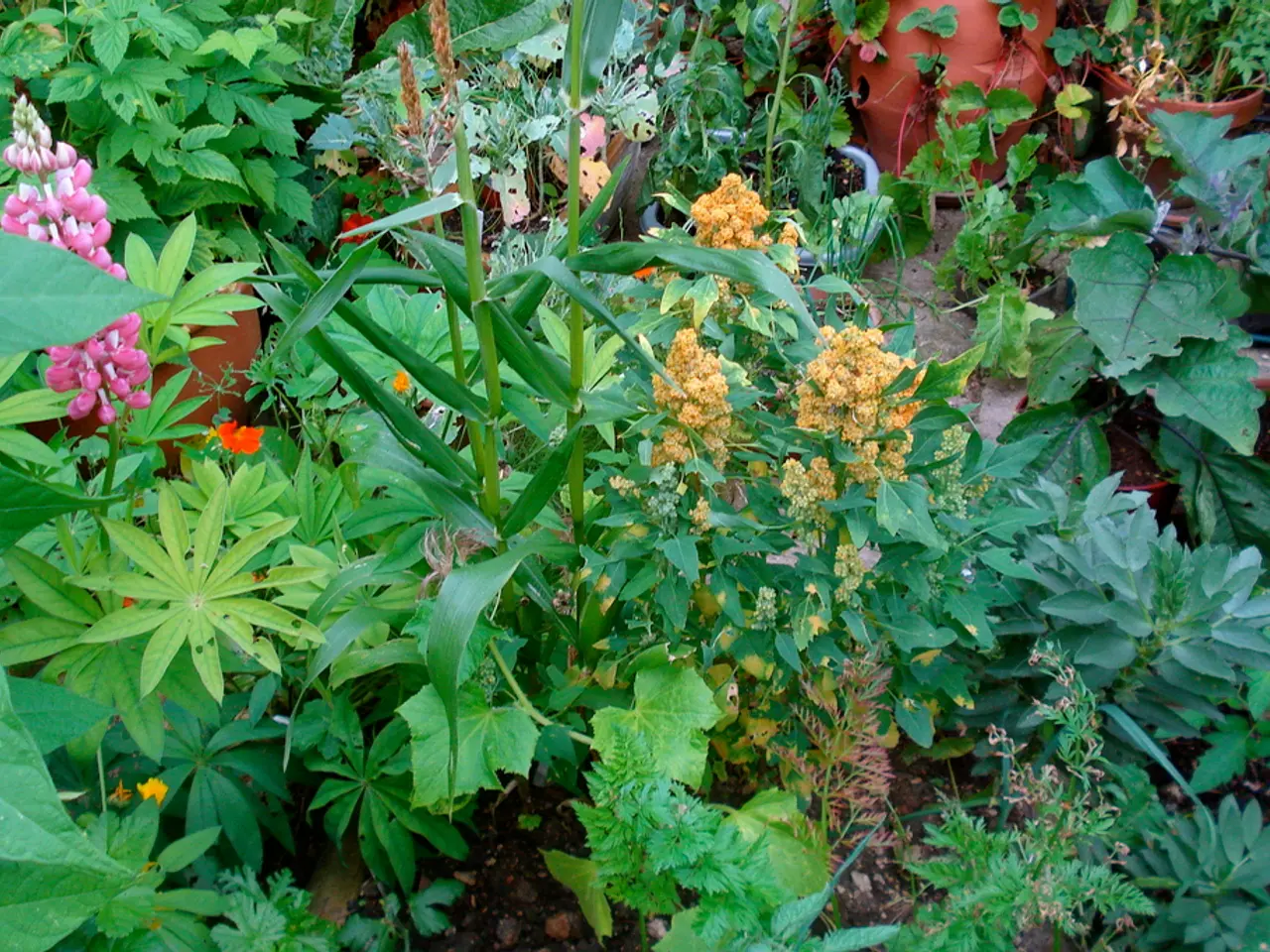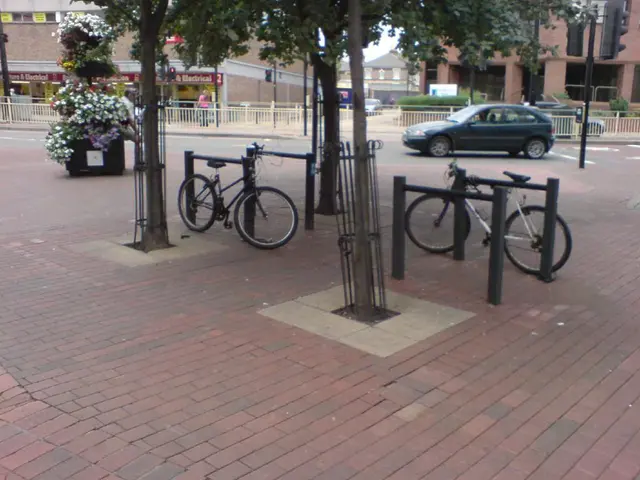Cultivating Naturally: Guidelines for Chemical-Free Gardening
In the realm of gardening, a new approach is gaining popularity - regenerative gardening with a Back-to-Eden twist. This method, inspired by natural forest ecosystems, aims to build healthy soil layers, utilise wood mulch, and minimise soil disturbance.
To get started, the first step is to clear grass or weeds from the planting area. This can be achieved by covering them with cardboard or newspaper, or by gently removing them without turning the soil deeply, preserving the essential microbial and fungal networks.
Next, a layer of high-quality compost is added over the cleared area, enriching the soil with nutrients and beneficial microorganisms. This step mimics the natural nutrient cycling found in forests.
Following the compost layer, a thick layer of wood chips or shredded bark mulch is spread. Unlike traditional mulch, this wood layer slowly breaks down, feeding fungal communities, retaining moisture, suppressing weeds, and regulating soil temperature.
If the soil is compacted, it is gently loosened without excessive tilling using a broadfork or garden fork. This process aerates and improves drainage while preserving soil structure and organisms.
When planting seeds or transplants, the mulch is moved aside only where necessary, the plants are planted directly into the soil (or compost layer beneath), and then the mulch is replaced around the plants. This reduces soil exposure and disturbance while allowing plants to access nutrients and moisture.
Composting is a crucial aspect of this regenerative practice. Organic matter such as kitchen scraps, garden waste, and leaves are continuously added to the compost system, producing rich material to replenish the garden and sustain soil health over time.
With a regenerative garden, less work is required later on, resulting in healthier plants. Weeds are less likely to take over because the soil is covered, and the garden requires minimal maintenance once it is established. Bare soil is avoided as it invites weeds.
In summary, the Back-to-Eden approach in regenerative gardening involves clearing grass gently, layering compost as a nutrient base, applying a thick wood chip mulch for soil cover, lightly loosening soil as needed without deep digging, planting directly into the prepared soil under the mulch, and sustaining the system with ongoing compost production and additions.
This approach creates a resilient, low-maintenance garden that works in harmony with natural processes to regenerate soil and plant health. Over time, the mulch breaks down into rich, living soil. By avoiding synthetic fertilisers and pesticides, this method supports biodiversity and carbon sequestration in the soil, aligning well with regenerative agriculture principles.
Embrace the Back-to-Eden approach and watch your garden thrive in a sustainable and regenerative way.
- To maintain a sustainable lifestyle at home, consider adopting regenerative gardening with a Back-to-Eden twist, as it encourages the growth of healthy plants and soil.
- Alongside the compost layer in your regenerative garden, strategically place seeds or transplants, ensuring they are planted directly into the soil or compost layer, and replace the wooden mulch around them.
- For an eco-friendly home and garden decor, opt for organic matter such as leaves and kitchen scraps for your compost, fostering a healthy soil ecosystem and promoting biodiversity.
- Embrace the ethos of regenerative living as you work on your garden, nurturing the soil through minimal soil disturbance and building layers that resemble forest ecosystems.
- With a regenerative garden, not only will you enjoy a beautiful outdoor space, but you'll also be contributing to carbon sequestration and promoting biodiversity, making it an appealing choice for those who value sustainable-living and home-and-garden practices.






